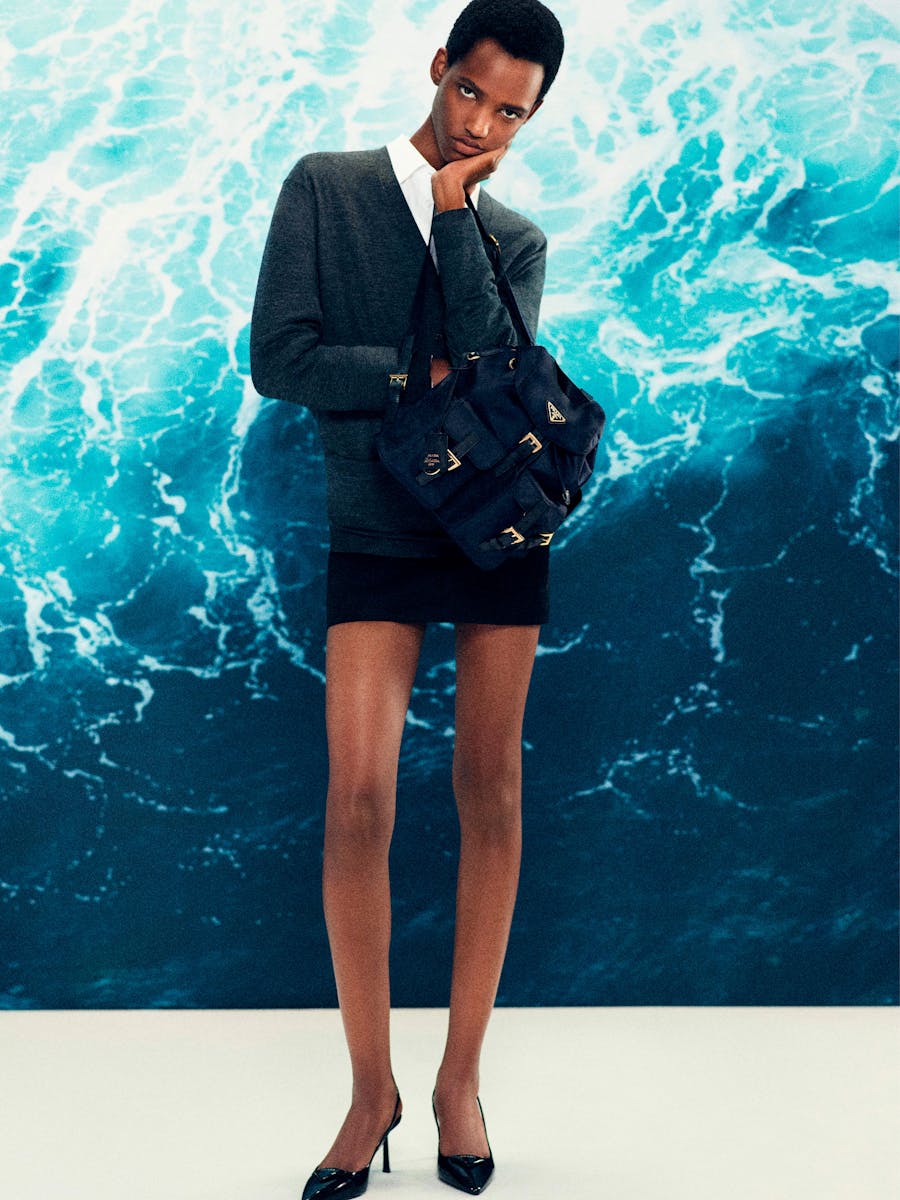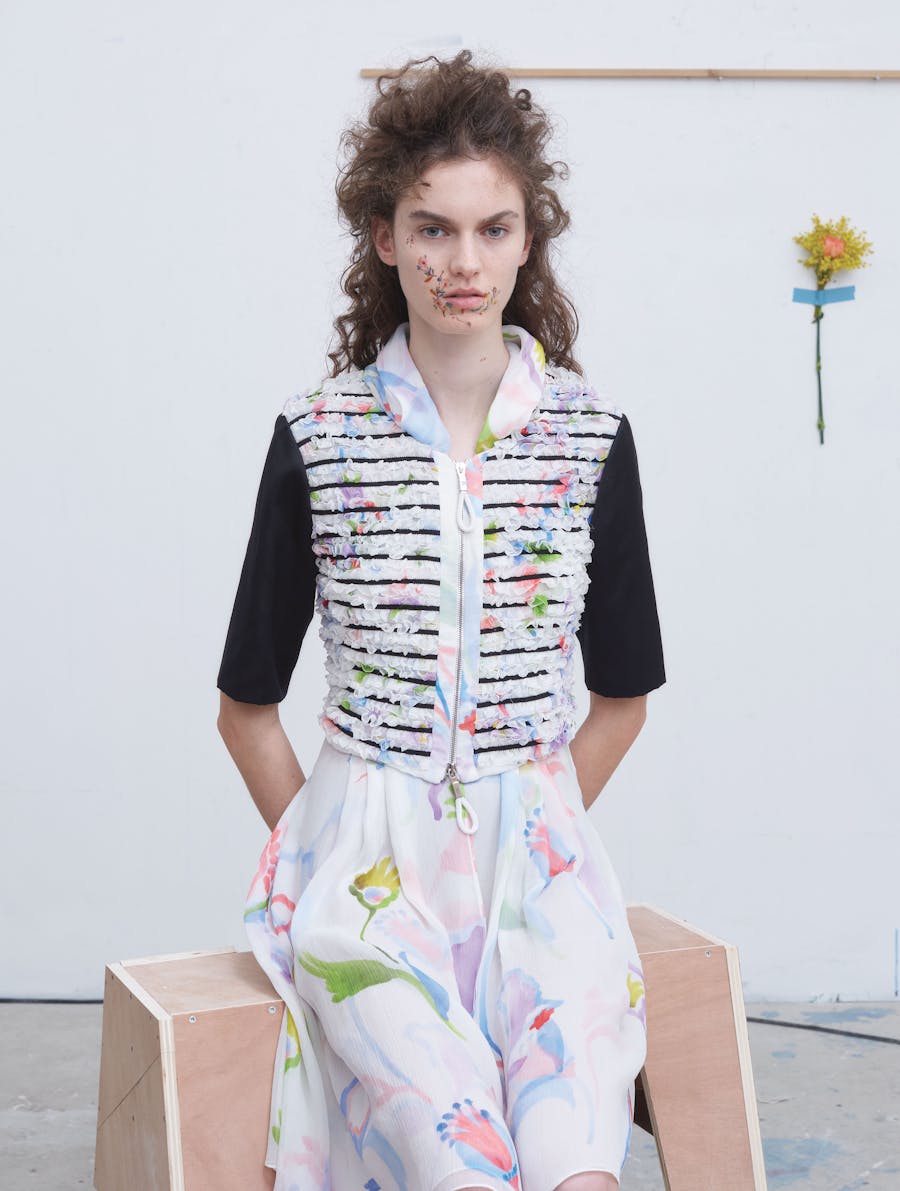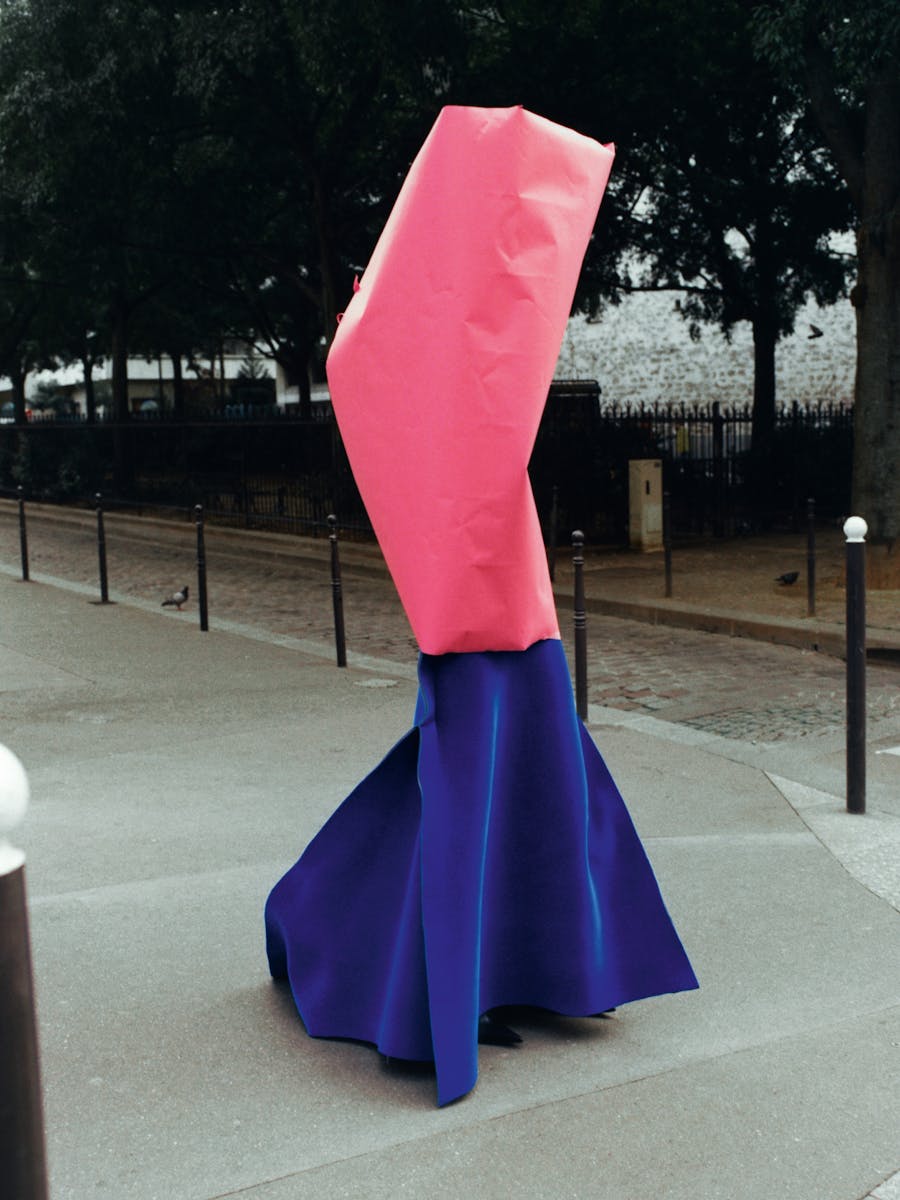His way with leather.
His mythology was crafted by the individual stories experienced throughout his life, with each extreme came greater depth of understanding. To properly talk about material that is alive, genuine, ambiguous and complex, we needed to find a multidisciplinary talent who would not abide by the laws of time, rumours and dogma. Director of the Fashion Museum of the City of Paris, historian, writer and performer, Olivier Saillard, has the peaceful manner of an intellectual, talking with a deep knowledge and precise point of view on passion in movements.
What is the importance of leather in your personal history of fashion ?
There are two materials that have a distinctive place in fashion: leather and jeans. They are self-expla- natory materials. A leather jacket is a jacket as much as a piece of leather. When one says, “take your leather”, it means, “take your jacket”. The signified is the signifying. It is as if leather was its own logotype to define a jacket or even sometimes a piece of clothing. In addition, like jeans, leather has had various symbolic and sociological values through ages.
The leather jacket first began as the uniform of the driver or the biker, then evolved to the bad guy, then the trendy guy and then returned again to the bad guy. It has been accordingly over and undervalued throughout a very fascinating life. Jersey, muslin and cotton do not evoke as much.
It is also a very erotic material. There are very few clothes for men or women that are so powerfully embodied; it does not need to be explained. It is su- rely due to the “skin to skin” effect that goes with wearing leather. Leather is a tanned, then treated skin that becomes very epidermal. It is even truer when one wears it naked as the skins’ proxi- mity is reinforced.
And it is finally important to notice that leather is a bit independent of fashion trends. The jackets or pants’ shape evolves but leather itself is a lifetime piece. The older it gets, the prettier. The more a Hermès bag is used, the prettier it becomes. Leather imposes its rules to fashion and not the opposite. Yes, I do see leather as a rock resisting the fashion tornados.
Can we say that leather is a material that finally goes beyond fashion ?
Sometimes yes... other times no. A 1980’s Perfecto is not the same as a today’s model. If lines evolve, it does resist longer to time. A simple leather, branded or not, can last fore- ver. Sometimes, it is also the uniform of a certain type of youth or social class: bikers always wear the same uni- forms that resist to anything. So yes, sometimes we can consider leather as an alternative to fashion, or at least we used to, as unfortunately fashion can- nibalizes everything.
When you talked about eroticism... can that have anything to do with the fact that leather was used as the first clothing in human history ?
It is not entirely true as the first human clothing was skin itself. And skin per say, the one cut up from an animal, is not leather. It becomes leather after various tanning produc- tion processes. And it is interesting to notice that tanners have always been undervalued and rejected from every socio-professional class. They have the awkward position of creating mate- rial for living beings that comes from their work on the dead. Leather results from that. As well, I don’t think eroti- cism was present originally in fashion history. Eroticism is a very nurtured concept. It answers a need and comes with a certain education and specific codes that must have been very dif- ferent in the ancient time. I would say that eroticism and sexuality started to be associated with leather no sooner than in the 20th century. And if skin has been the first human clothing, it is certainly because it was practical not for aesthetic reasons... Cutting off the skin of an animal was simpler than inventing the weaving loom.
You are very sensitive to the crafts and traditions around leather. Does the gap between the origin of the material and its final usage bother you ?
I do think it is sometimes absurd to try to make leather as beautiful as muslin or to embroider it too much for instance. I think leather is more beau- tiful when it is natural and offered in its simple shape like Hermès or bikers’ jackets do. I mean it is as if you are buying a loft and lighting it with a Hausmannian style pendant lamp to warm up the space... For me this is an aberration, the same way coloured leather is. I don’t find any interest in transforming leather into a fabric. In my opinion, aerograph or painted leathers are not appealing, but this is just my personal taste not an official statement.
We use leather for combat, conquest or extreme sports gear. Is it a masculine material ?
Not anymore. Leather has been out of the “man only type” since the 1960’s. In addition, women are often renewing their wardrobe with leather clothes, whereas men are only loyal to “pieces”. Women also have access to more sophisticated shapes like leather pants, which are only options for a certain type of man.
Is this material more mythological than any others ?
For sure, just think of the naughty boy, the tantalising girl... and all the moments in history where leather has had a specific role: the westward exploration, aviation, auto- mobile, etc. The passion going on with the movements in the 1960’s certainly gave a status to leather that was not the one intented originally. Leather has been somehow hijacked and transformed into an exotic uni- form, an element of folklore.
You often talked about your loathing for dead clothes. Does leather, an alive material, escape from this feeling of death ?
It is an alive, but ambiguous material because I can still see the ani- mal sacrificed for it. For me, leather has a cruel component. However it is less morbid than other materials. When not being worn, a fluid jersey dress by Madame Grès, is like a tissue... whereas leather has the memory of the body that wore it, it keeps the dimension of that anatomy. There is more form, it is almost like a sculpture.





